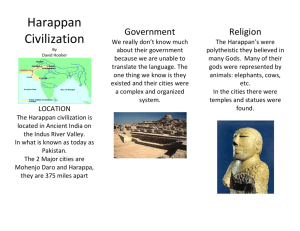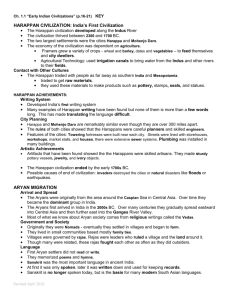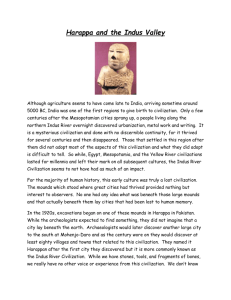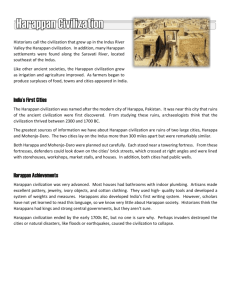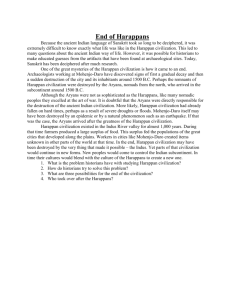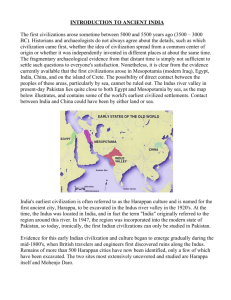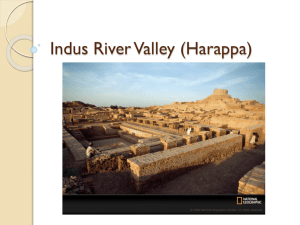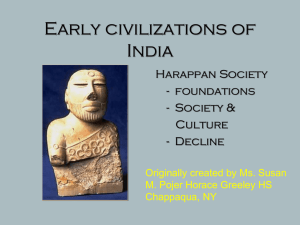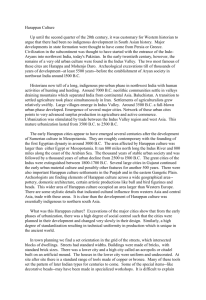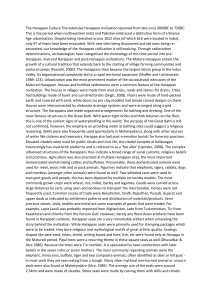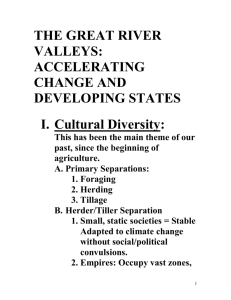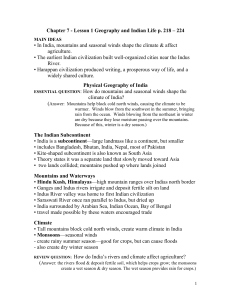Harappan Civilization
advertisement
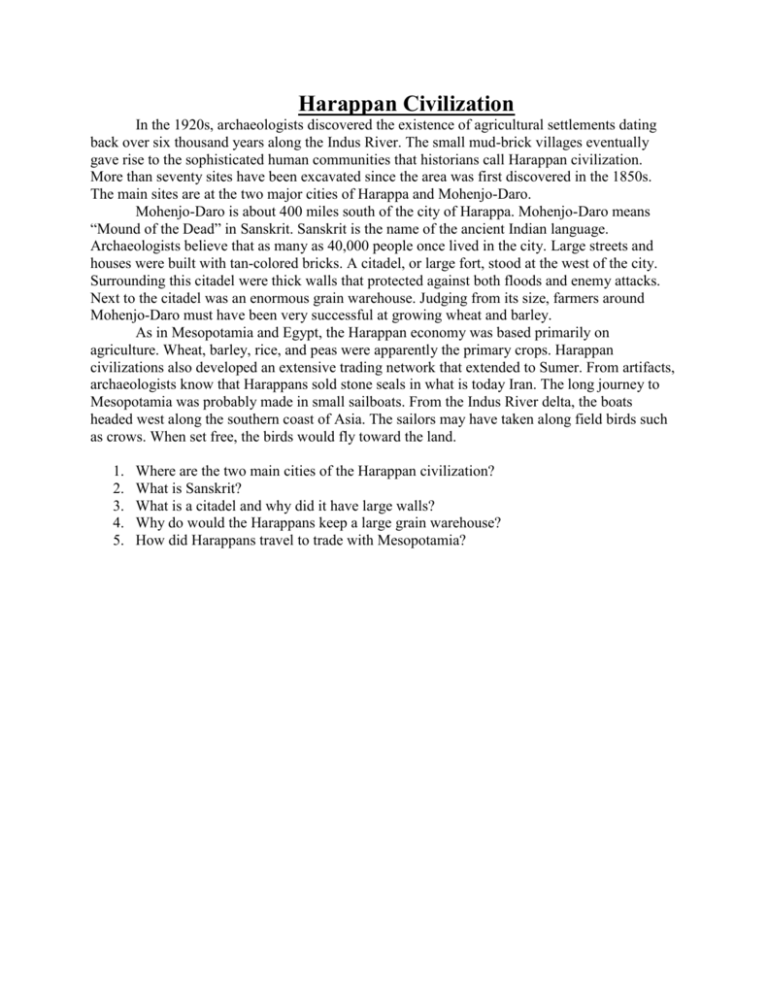
Harappan Civilization In the 1920s, archaeologists discovered the existence of agricultural settlements dating back over six thousand years along the Indus River. The small mud-brick villages eventually gave rise to the sophisticated human communities that historians call Harappan civilization. More than seventy sites have been excavated since the area was first discovered in the 1850s. The main sites are at the two major cities of Harappa and Mohenjo-Daro. Mohenjo-Daro is about 400 miles south of the city of Harappa. Mohenjo-Daro means “Mound of the Dead” in Sanskrit. Sanskrit is the name of the ancient Indian language. Archaeologists believe that as many as 40,000 people once lived in the city. Large streets and houses were built with tan-colored bricks. A citadel, or large fort, stood at the west of the city. Surrounding this citadel were thick walls that protected against both floods and enemy attacks. Next to the citadel was an enormous grain warehouse. Judging from its size, farmers around Mohenjo-Daro must have been very successful at growing wheat and barley. As in Mesopotamia and Egypt, the Harappan economy was based primarily on agriculture. Wheat, barley, rice, and peas were apparently the primary crops. Harappan civilizations also developed an extensive trading network that extended to Sumer. From artifacts, archaeologists know that Harappans sold stone seals in what is today Iran. The long journey to Mesopotamia was probably made in small sailboats. From the Indus River delta, the boats headed west along the southern coast of Asia. The sailors may have taken along field birds such as crows. When set free, the birds would fly toward the land. 1. 2. 3. 4. 5. Where are the two main cities of the Harappan civilization? What is Sanskrit? What is a citadel and why did it have large walls? Why do would the Harappans keep a large grain warehouse? How did Harappans travel to trade with Mesopotamia?

